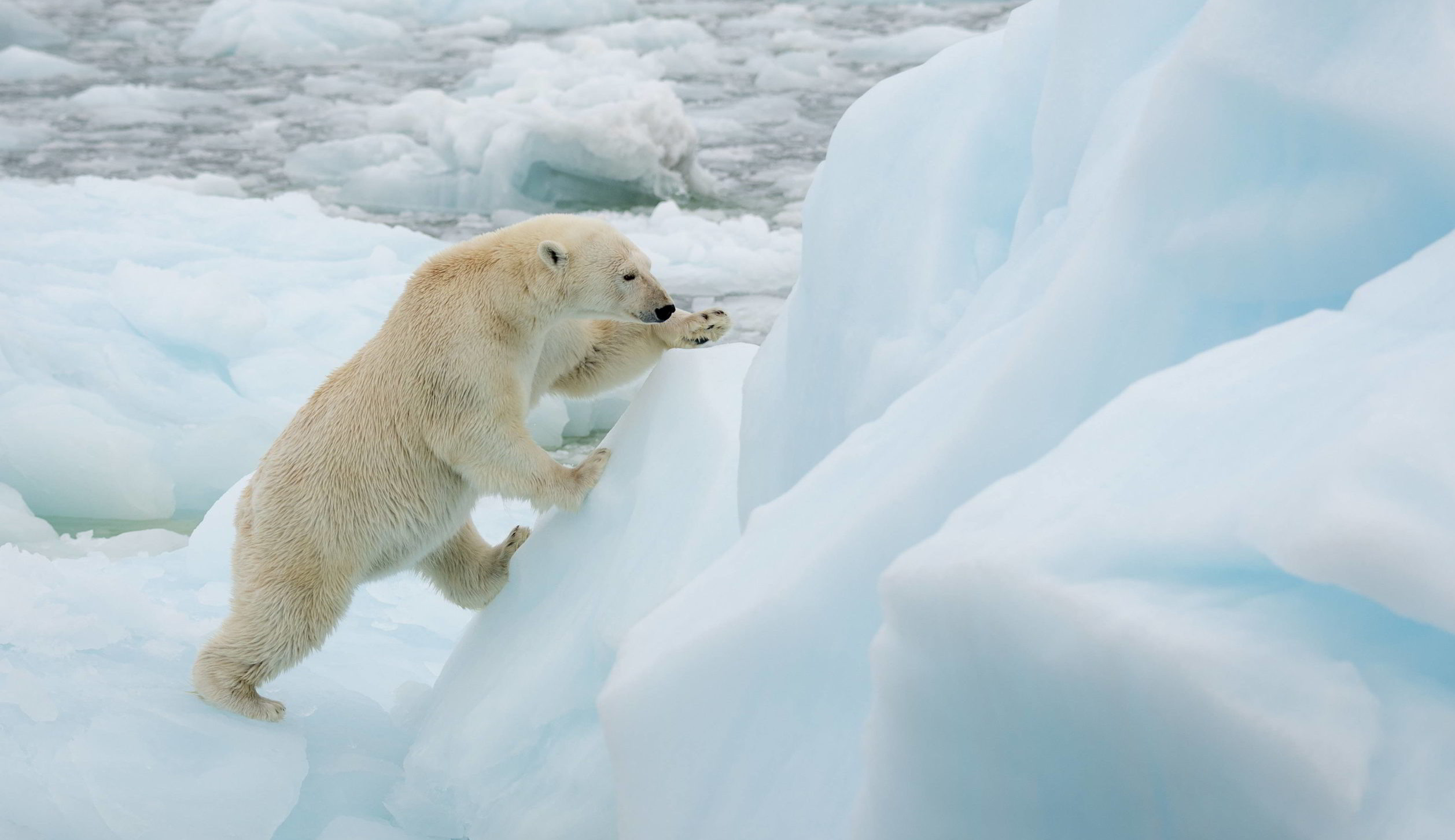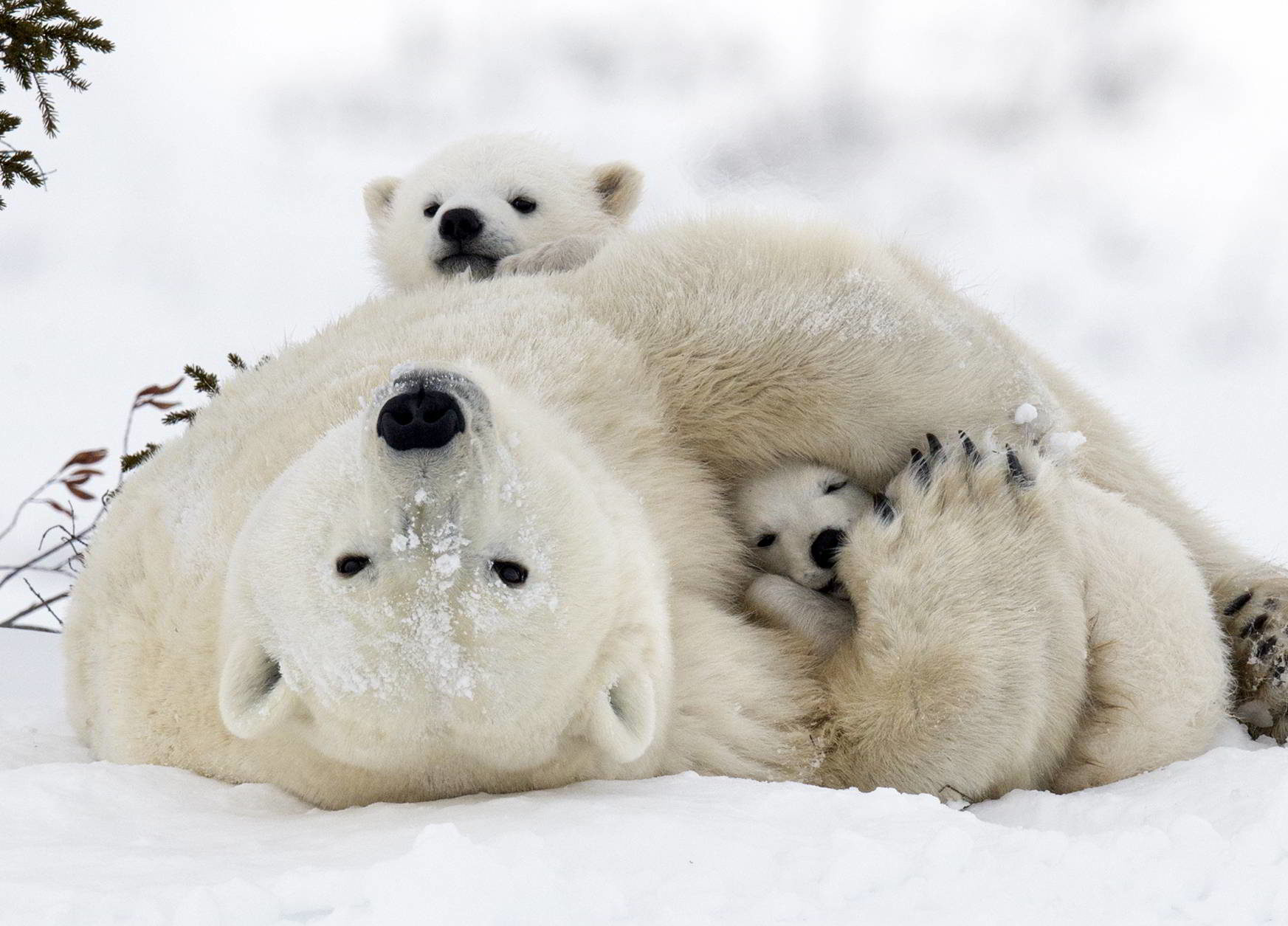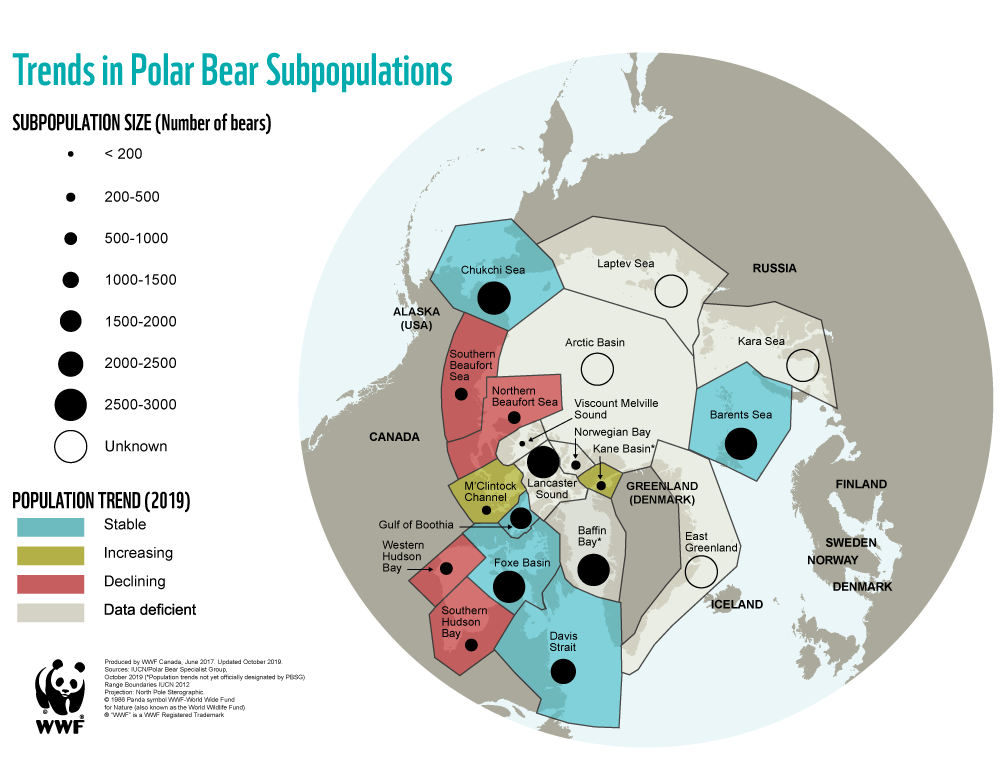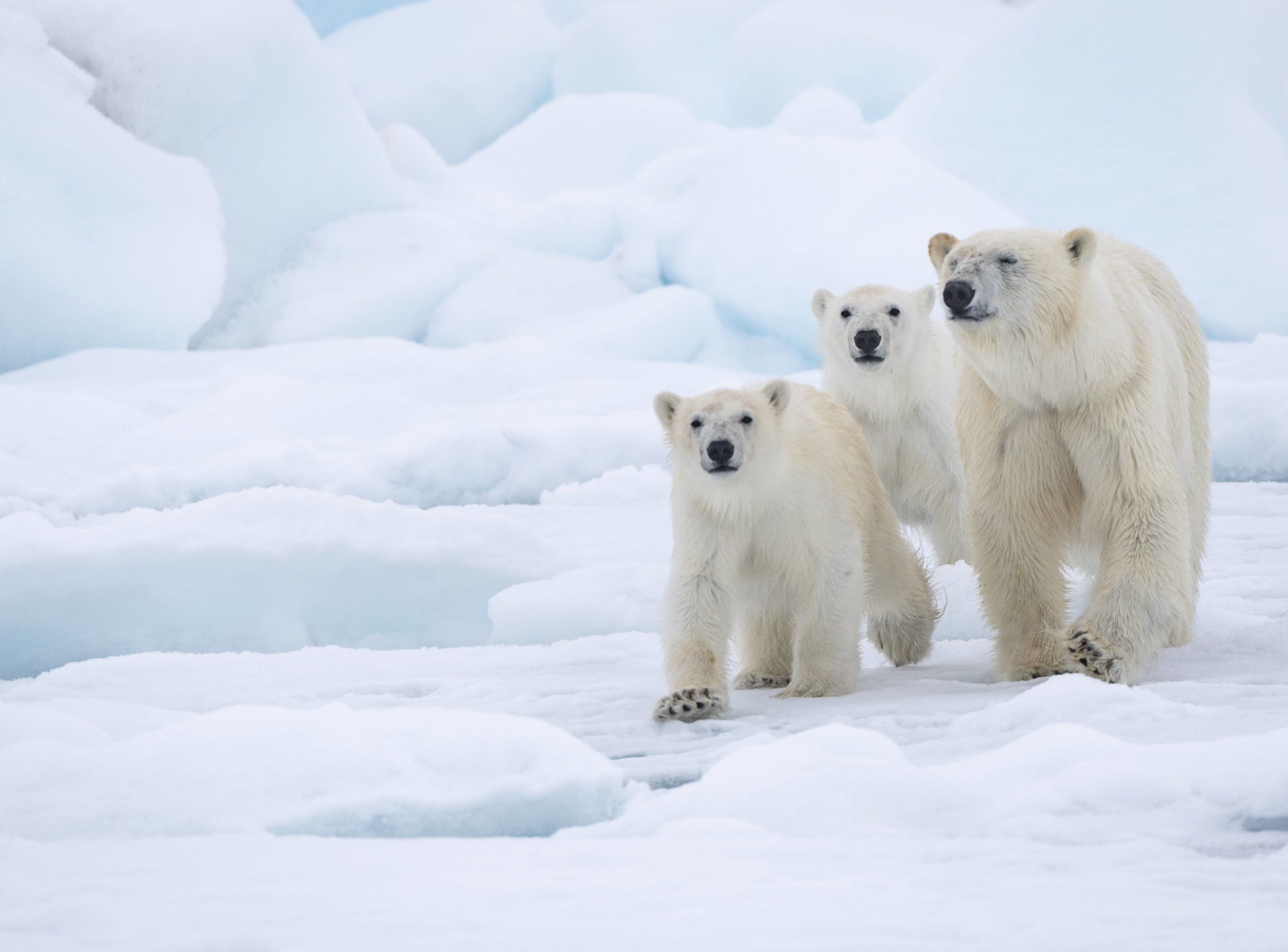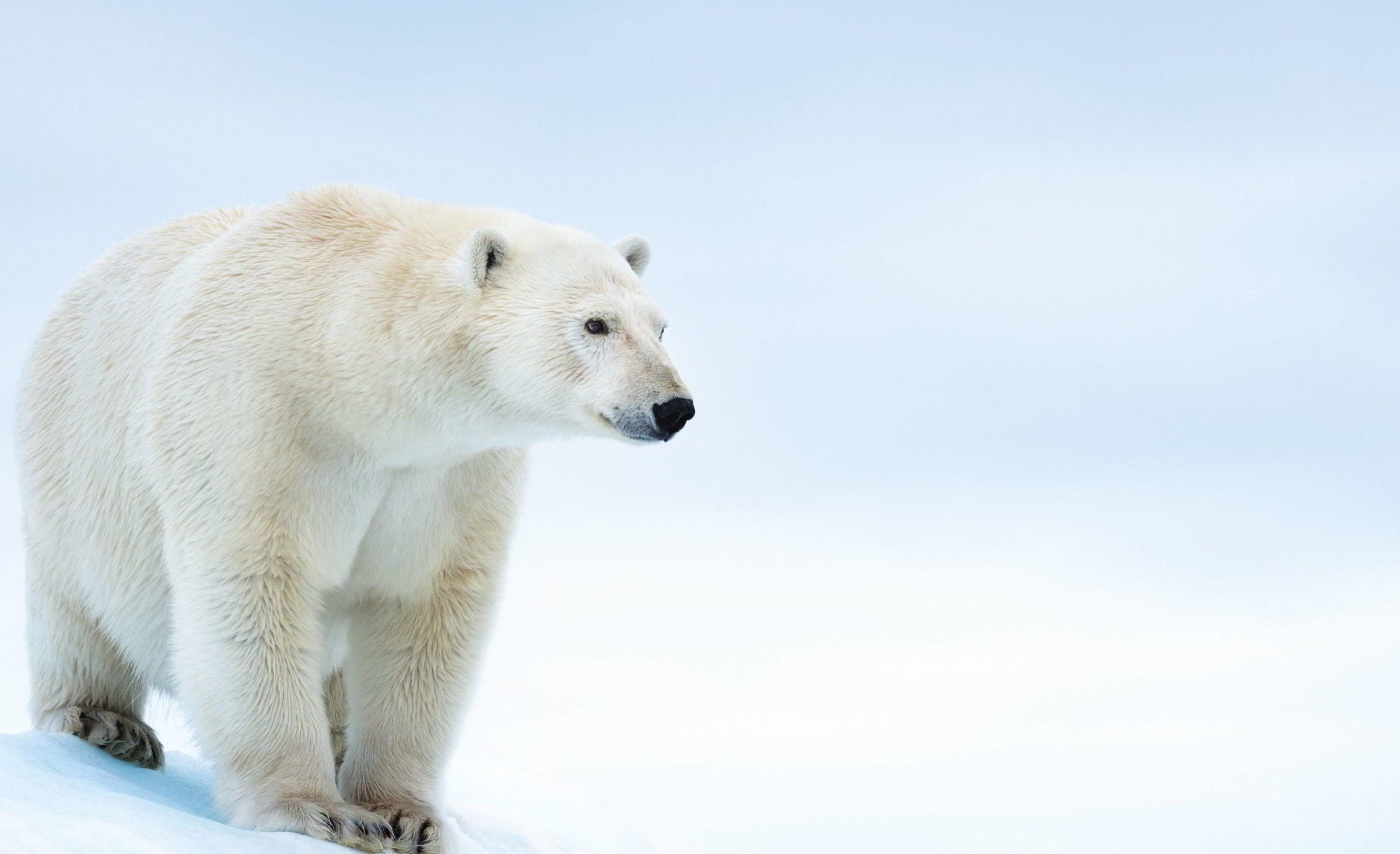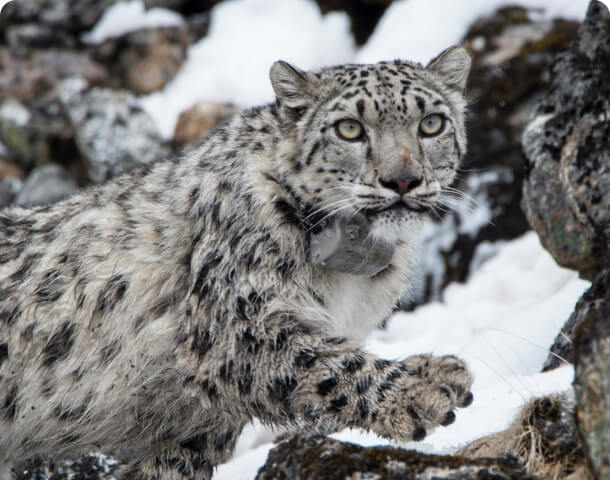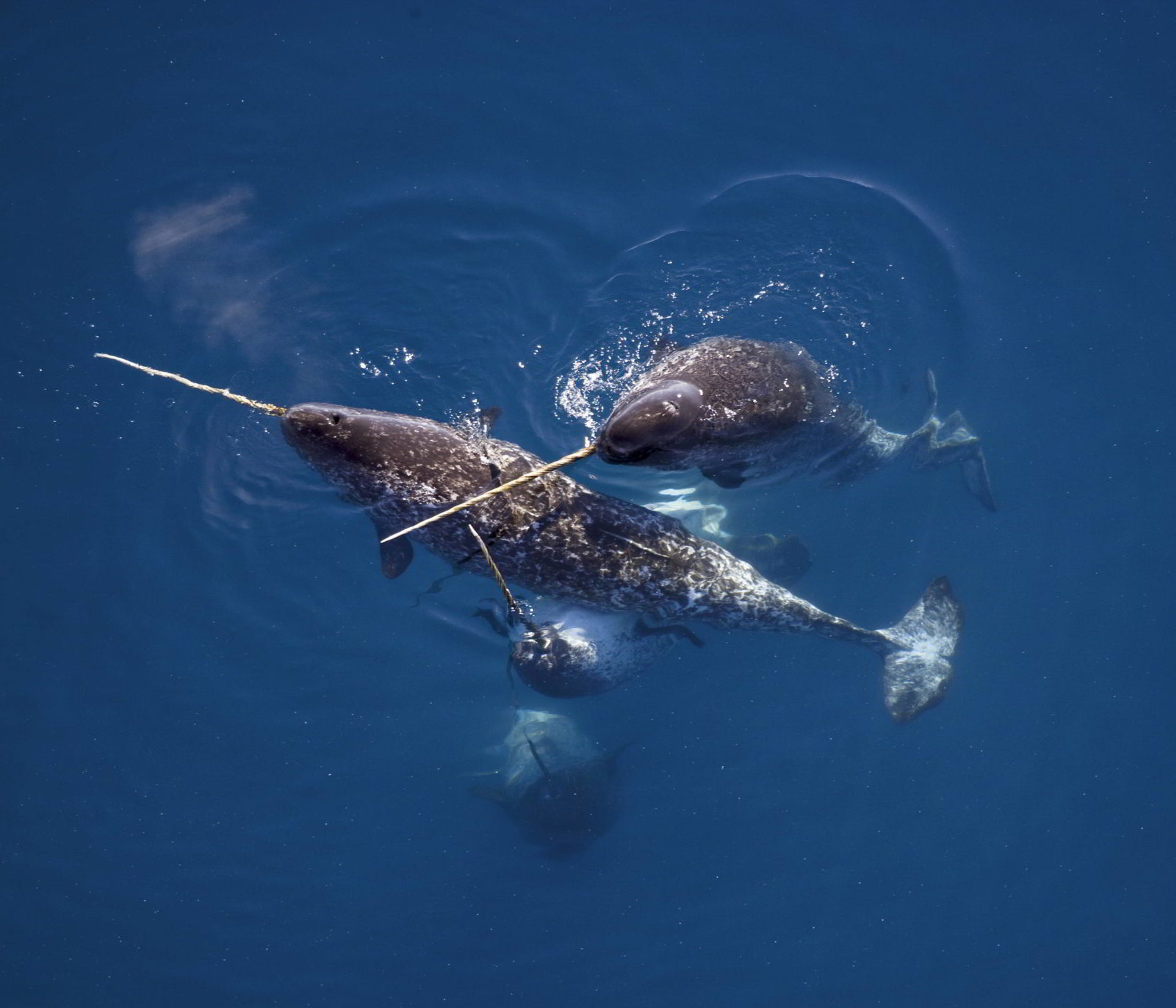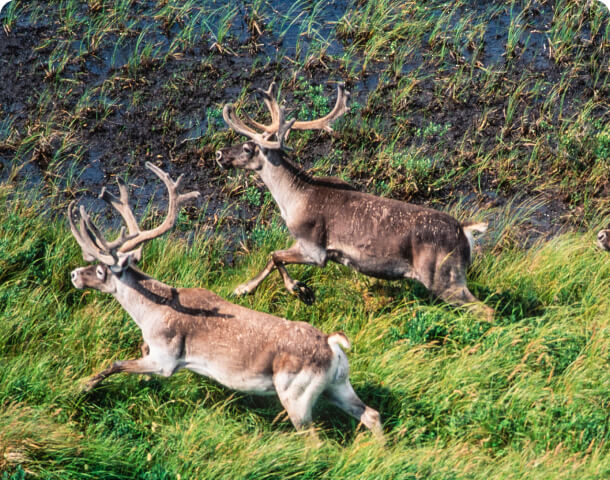The polar bear’s future is inextricably linked to its sea-ice habitat. As climate change continues to reduce the thickness of sea ice, the future of polar bears and their habitat are at risk. Less ice means increased conflict with humans as bears spend more time on land seeking new sources of food.
The ice is the foundation of Arctic marine life, the ecosystem on which bears rely for every aspect of their lives. It is where they mate and raise their cubs. Sea ice is also an essential habitat for the polar bear’s primary food, ringed seals, as they pup and rest on the ice. Current knowledge shows that polar bears have some capacity to adjust to the warming Arctic, but the loss of sea-ice habitat may be happening too rapidly to allow for adaptation and there are no substitutes on land for the fat-rich seals on which the bears depend.
Some of the best-studied polar bear populations are spending more time on land, like those in Manitoba, Ontario and southern Nunavut. Without sea ice and seals, polar bears are left to search for other food sources. This can lead them into communities, where garbage dumps, sled dog yards and human food storage offer easy pickings. Conflict between bears and people can follow.

